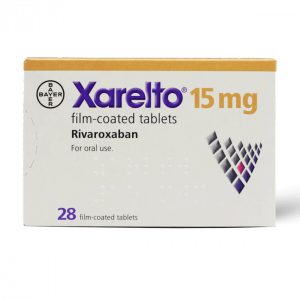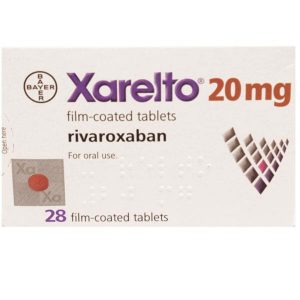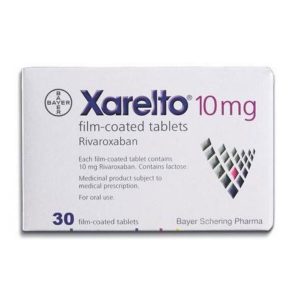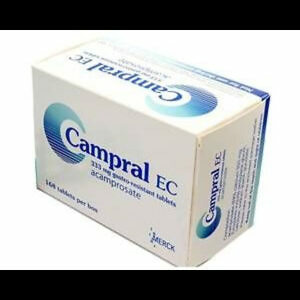Rivaroxaban 10mg Tablets – Xarelto 10mg Generic
£17.50 – £180.00
Xarelto 10mg Generic
Prescription product
Rivaroxaban 10mg Tablets – Xarelto 10mg Generic available in 3 pack sizes
- Rivaroxaban 10mg Tablets, 10 Tablets
- Rivaroxaban 10mg Tablets, 30 Tablets
- Rivaroxaban 10mg Tablets, 100 Tablets
Compare
Description
Rivaroxaban 10mg Tablets – Xarelto 10mg Generic
Rivaroxaban 10mg Tablets, the generic equivalent of Xarelto 10mg, offer a reliable and affordable solution for anticoagulant therapy. Containing the active substance rivaroxaban, these tablets belong to a class of medicines known as antithrombotic agents. Rivaroxaban works by inhibiting factor Xa, a critical component in the blood clotting process, thereby reducing the tendency of the blood to form clots. Available in three convenient pack sizes—10, 30, and 100 tablets—these tablets are suitable for both human and veterinary use, making them a versatile choice for managing blood clotting disorders.
Product Benefits:
- Effective Anticoagulant: By blocking factor Xa, Rivaroxaban significantly reduces the risk of blood clot formation, helping to prevent conditions such as deep vein thrombosis (DVT) and pulmonary embolism (PE).
- Generic and Affordable: As a cost-effective alternative to Xarelto, Rivaroxaban 10mg Tablets provide the same efficacy at a lower price, making it accessible for more patients.
- Versatile Use: Approved for use in both humans and animals, this medication is also effective in treating blood clotting disorders in cats and dogs.
- Convenient Pack Sizes: Available in packs of 10, 30, and 100 tablets, ensuring that you can choose the right quantity for your treatment needs.
Use: Rivaroxaban 10mg Tablets are prescribed for the prevention and treatment of various blood clotting conditions, including:
- Deep vein thrombosis (DVT)
- Pulmonary embolism (PE)
- Stroke prevention in patients with non-valvular atrial fibrillation
In veterinary medicine, Rivaroxaban is also used to manage blood clotting disorders in cats and dogs.
Dosage and Administration:
- Follow the dosage instructions provided by your healthcare professional.
- For human use: typically taken once daily, with or without food.
- For veterinary use: consult with a veterinarian for the appropriate dosage and administration for your pet.
- Do not discontinue use abruptly without consulting your healthcare provider.
Important Information:
Disclaimer: This product description is provided for informational purposes only. It is not a substitute for professional medical advice, diagnosis, or treatment. Always seek the advice of your physician or other qualified health provider with any questions you may have regarding a medical condition
Rivaroxaban 10mg Tablets Reviews
After using Rivaroxaban 2.5mg Tablets, it’s helpful to let others know about your experience. Reviews of an item help other users know that medicines received have helped the condition it is claimed for, how well the treatment worked or any issues to be aware of. We invite our users to leave a review of both their treatment and of the service provided. Click on the reviews tab to see if there has been feedback on this item.
What is the price of Rivaroxaban 10mg Tablets?
The price of Rivaroxaban 10mg Tablets starts from £17.50
Where can you buy Rivaroxaban 10mg Tablets?
You can buy Rivaroxaban 10mg Tablets at Dock Pharmacy Essex UK, UK Online Pharmacy.
Can you buy Rivaroxaban 10mg Tablets Over the counter?
Rivaroxaban 10mg Tablets is not available to buy over the counter. You need a prescription to buy Rivaroxaban 10mg Tablets from Dock Pharmacy. You can find more information about how to obtain the medication here:
How To Use
How to take Rivaroxaban
Always take this medicine exactly as your doctor has told you.
Check with your doctor or pharmacist if you are not sure.
How much to take
- To prevent blood clots in the veins after a hip or knee replacement operation
The recommended dose is one tablet Rivaroxaban 10 mg once a day.
- To treat blood clots in the veins of your legs and blood clots in the blood vessels of your lungs, and for preventing blood clots from re-occurring After at least 6 months blood clot treatment, the recommended dose is either one 10 mg tablet once a day or one 20 mg tablet once a day. Your doctor has prescribed you Rivaroxaban 10 mg once a day. Swallow the tablet preferably with water. Rivaroxaban can be taken with or without food.
Delivery Options
Delivery options
All deliveries are subject to the availability of the product and product sale conditions been met.
Order & Collect
Free next-day collection from In-Store
UK Delivery
Standard Delivery within the UK £3.50 Delivery time 3-4 days
First Class Delivery within the UK £5.90 Delivery time 1-2 days
Priority Delivery within the UK £7.10. Next day delivery by 1pm. Order must be placed by 1pm. Priority delivery is only available Monday to Thursday.
Europe Delivery
Standard Delivery within EEC from £12.50 Delivery time up to 5 days depending on the local delivery service within your country.
Expedited Delivery within EEC £39.50 Delivery time 2 days. Delivery by DHL, UPS or TNT.
Rest of the World
Standard Delivery Rest of the World from £16.10 Delivery Time 10 – 15 Days
Expedited Delivery Rest of the World £55.09 Delivery 5 days. Delivery service by DHL, TNT or UPS
For more information see our Shipping Policy or view our Return policy.
Product Details
What you need to know before you take Rivaroxaban
Do not take Rivaroxaban • if you are allergic to rivaroxaban or any of the other ingredients of this medicine (listed in section 6) • if you are bleeding excessively • if you have a disease or condition in an organ of the body that increases the risk of serious bleeding (e.g. stomach ulcer, injury or bleeding in the brain, recent surgery of the brain or eyes) • if you are taking medicines to prevent blood clotting (e.g. warfarin, dabigatran, apixaban or heparin), except when changing anticoagulant treatment or while getting heparin through a venous or arterial line to keep it open • if you have an acute coronary syndrome and previously had a bleeding or a blood clot in your brain (stroke) • if you have coronary artery disease or peripheral artery disease and previously had a bleeding in your brain (stroke) or where there was a blockage of the small arteries providing blood to the brain’s deep tissues (lacunar stroke) or if you had a blood clot in your brain (ischaemic, nonlacunar stroke) in the previous month • if you have a liver disease which leads to an increased risk of bleeding • if you are pregnant or breast-feeding Do not take Rivaroxaban and tell your doctor if any of these apply to you. Warnings and precautions Talk to your doctor or pharmacist before taking Rivaroxaban. Rivaroxaban should not be used in combination with certain other medicines which reduce blood clotting such as prasugrel or ticagrelor other than acetylsalicylic acid and clopidogrel/ticlopidine. Take special care with Rivaroxaban • if you have an increased risk of bleeding, as could be the case in situations such as: − severe kidney disease, since your kidney function may affect the amount of medicine that works in your body − if you are taking other medicines to prevent blood clotting (e.g. warfarin, dabigatran, apixaban or heparin), when changing anticoagulant treatment or while getting heparin through a venous or arterial line to keep it open (see section “Other medicines and Rivaroxaban”) − bleeding disorders − very high blood pressure, not controlled by medical treatment − diseases of your stomach or bowel that might result in bleeding, e.g. inflammation of the bowels or stomach, or inflammation of the oesophagus (gullet), e.g. due to gastroesophageal reflux disease (disease where stomach acid goes upwards into the oesophagus) or tumours located in the stomach or bowels or genital tract or urinary tract − a problem with the blood vessels in the back of your eyes (retinopathy) − a lung disease where your bronchi are widened and filled with pus (bronchiectasis), or previous bleeding from your lung − you are older than 75 years − you weigh less than 60 kg − you have a coronary artery disease with severe symptomatic heart failure • if you have a prosthetic heart valve • if you know that you have a disease called antiphospholipid syndrome (a disorder of the immune system that causes an increased risk of blood clots), tell your doctor who will decide if the treatment may need to be changed. If any of the above apply to you, tell your doctor before you take Rivaroxaban. Your doctor will decide, if you should be treated with this medicine and if you should be kept under closer observation. If you need to have an operation • it is very important to take Rivaroxaban before and after the operation exactly at the times you have been told by your doctor. • If your operation involves a catheter or injection into your spinal column (e.g. for epidural or spinal anaesthesia or pain reduction): − it is very important to take Rivaroxaban before and after the injection or removal of the catheter exactly at the times you have been told by your doctor − tell your doctor immediately if you get numbness or weakness of your legs or problems with your bowel or bladder after the end of anaesthesia, because urgent care is necessary. Children and adolescents Rivaroxaban 2.5 mg tablets are not recommended for people under 18 years of age. There is not enough information on their use in children and adolescents. Other medicines and Rivaroxaban Tell your doctor or pharmacist if you are taking, have recently taken or might take any other medicines, including medicines obtained without a prescription. • If you are taking − some medicines for fungal infections (e.g. fluconazole, itraconazole, voriconazole, posaconazole), unless they are only applied to the skin − ketoconazole tablets (used to treat Cushing’s syndrome – when the body produces an excess of cortisol) − some medicines for bacterial infections (e.g. clarithromycin, erythromycin) − some anti-viral medicines for HIV / AIDS (e.g. ritonavir) − other medicines to reduce blood clotting (e.g. enoxaparin, clopidogrel or vitamin K antagonists such as warfarin and acenocoumarol, prasugrel and ticagrelor (see section “Warnings and Precautions”)) − anti-inflammatory and pain relieving medicines (e.g. naproxen or acetylsalicylic acid) − dronedarone, a medicine to treat abnormal heart beat − some medicines to treat depression (selective serotonin reuptake inhibitors (SSRIs) or serotonin norepinephrine reuptake inhibitors (SNRIs)) If any of the above apply to you, tell your doctor before taking Rivaroxaban, because the effect of Rivaroxaban may be increased. Your doctor will decide, if you should be treated with this medicine and if you should be kept under closer observation. If your doctor thinks that you are at increased risk of developing stomach or bowel ulcers, he may also use a preventative ulcer treatment. • If you are taking − some medicines for treatment of epilepsy (phenytoin, carbamazepine, phenobarbital) − St John’s Wort (Hypericum perforatum), a herbal product used for depression − rifampicin, an antibiotic If any of the above apply to you, tell your doctor before taking Rivaroxaban, because the effect of Rivaroxaban may be reduced. Your doctor will decide, if you should be treated with Rivaroxaban and if you should be kept under closer observation. Pregnancy and breast-feeding Do not take Rivaroxaban if you are pregnant or breast-feeding. If there is a chance that you could become pregnant, use a reliable contraceptive while you are taking Rivaroxaban. If you become pregnant while you are taking this medicine, tell your doctor immediately, who will decide how you should be treated. Driving and using machines Rivaroxaban may cause dizziness (common side effect) or fainting (uncommon side effect) (see section 4, ” Possible side effects”). You should not drive, ride a bicycle or use any tools or machines if you are affected by these symptoms. Rivaroxaban contains lactose and sodium If you have been told by your doctor that you have an intolerance to some sugars, contact your doctor before taking this medicine. This medicine contains less than 1 mmol sodium (23 mg) per tablet, that is to say essentially ”sodiumfree”.
Side Effects
Possible side effects of Rivaroxaban
Like all medicines, Rivaroxaban can cause side effects, although not everybody gets them. Like other similar medicines to reduce the formation of blood clots, Rivaroxaban may cause bleeding which may potentially be life threatening. Excessive bleeding may lead to a sudden drop in blood pressure (shock). In some cases the bleeding may not be obvious. Tell your doctor immediately if you experience any of the following side effects: • Signs of bleeding − bleeding into the brain or inside the skull (symptoms can include headache, one-sided weakness, vomiting, seizures, decreased level of consciousness, and neck stiffness. A serious medical emergency. Seek medical attention immediately!) − long or excessive bleeding − exceptional weakness, tiredness, paleness, dizziness, headache, unexplained swelling, breathlessness, chest pain or angina pectoris Your doctor may decide to keep you under closer observation or change the treatment. • Signs of severe skin reactions − spreading intense skin rash, blisters or mucosal lesions, e.g. in the mouth or eyes (StevensJohnson syndrome/toxic epidermal necrolysis). − a drug reaction that causes rash, fever, inflammation of internal organs, blood abnormalities and systemic illness (DRESS syndrome). The frequency of these side effects is very rare (up to 1 in 10,000 people). • Signs of severe allergic reactions − swelling of the face, lips, mouth, tongue or throat; difficulty swallowing; hives and breathing difficulties; sudden drop in blood pressure. The frequencies of severe allergic reactions are very rare (anaphylactic reactions, including anaphylactic shock; may affect up to 1 in 10,000 people) and uncommon (angioedema and allergic oedema; may affect up to 1 in 100 people). Overall list of possible side effects Common (may affect up to 1 in 10 people) • reduction in red blood cells which can make the skin pale and cause weakness or breathlessness • bleeding in the stomach or bowel, urogenital bleeding (including blood in the urine and heavy menstrual bleeding), nose bleed, bleeding in the gum • bleeding into the eye (including bleeding from the whites of the eyes) • bleeding into tissue or a cavity of the body (haematoma, bruising) • coughing up blood • bleeding from the skin or under the skin • bleeding following an operation • oozing of blood or fluid from surgical wound • swelling in the limbs • pain in the limbs • impaired function of the kidneys (may be seen in tests performed by your doctor) • fever • stomach ache, indigestion, feeling or being sick, constipation, diarrhoea • low blood pressure (symptoms may be feeling dizzy or fainting when standing up) • decreased general strength and energy (weakness, tiredness), headache, dizziness • rash, itchy skin • blood tests may show an increase in some liver enzymes Uncommon (may affect up to 1 in 100 people) • bleeding into the brain or inside the skull (see above signs of bleeding) • bleeding into a joint causing pain and swelling • thrombocytopenia (low number of platelets, which are cells that help blood to clot) • allergic reactions, including allergic skin reactions • impaired function of the liver (may be seen in tests performed by your doctor) • blood tests may show an increase in bilirubin, some pancreatic or liver enzymes or in the number of platelets • fainting • feeling unwell • faster heartbeat • dry mouth • hives Rare (may affect up to 1 in 1,000 people) • bleeding into a muscle • cholestasis (decreased bile flow), hepatitis incl. hepatocellular injury (inflamed liver incl. liver injury) • yellowing of the skin and eye (jaundice) • localised swelling • collection of blood (haematoma) in the groin as a complication of the cardiac procedure where a catheter is inserted in your leg artery (pseudoaneurysm) Very rare (may affect up to 1 in 10,000 people) • accumulation of eosinophils, a type of white granulocytic blood cells that cause inflammation in the lung (eosinophilic pneumonia) Not known (frequency cannot be estimated from the available data) • kidney failure after a severe bleeding • bleeding in the kidney sometimes with presence of blood in urine leading to inability of the kidneys to work properly (anticoagulant-related nephropathy) • increased pressure within muscles of the legs or arms after a bleeding, which leads to pain, swelling, altered sensation, numbness or paralysis (compartment syndrome after a bleeding) Reporting of side effects If you get any side effects talk to your doctor, pharmacist or nurse. This includes any possible side effects not listed in this leaflet. You can also report side effects directly via Yellow Card Scheme website www.mhra.gov.uk/yellowcard or search for MHRA Yellow Card in the Google Play or Apple App Store. By reporting side effects you can help provide more information on the safety of this medicine.
Ingredients
What Rivaroxaban contains
The active substance is rivaroxaban. Each tablet contains 10 mg of rivaroxaban.
How to Store
How to store Rivaroxaban
Keep this medicine out of the sight and reach of children. Do not use this medicine after the expiry date which is stated on the carton and on each blister or bottle after EXP. The expiry date refers to the last day of that month. This medicine does not require any special storage conditions. In-use Shelf-life: 90 days after first opening of the HDPE container Crushed tablets Crushed tablets are stable in water or apple puree for up to 4 hours. Do not throw away any medicines via wastewater or household waste. Ask your pharmacist how to throw away medicines you no longer use. These measures will help protect the environment.
Questions and answers of the customers
There are no questions yet, be the first to ask something for this product.
 +44 (0) 1375 846 316
+44 (0) 1375 846 316






